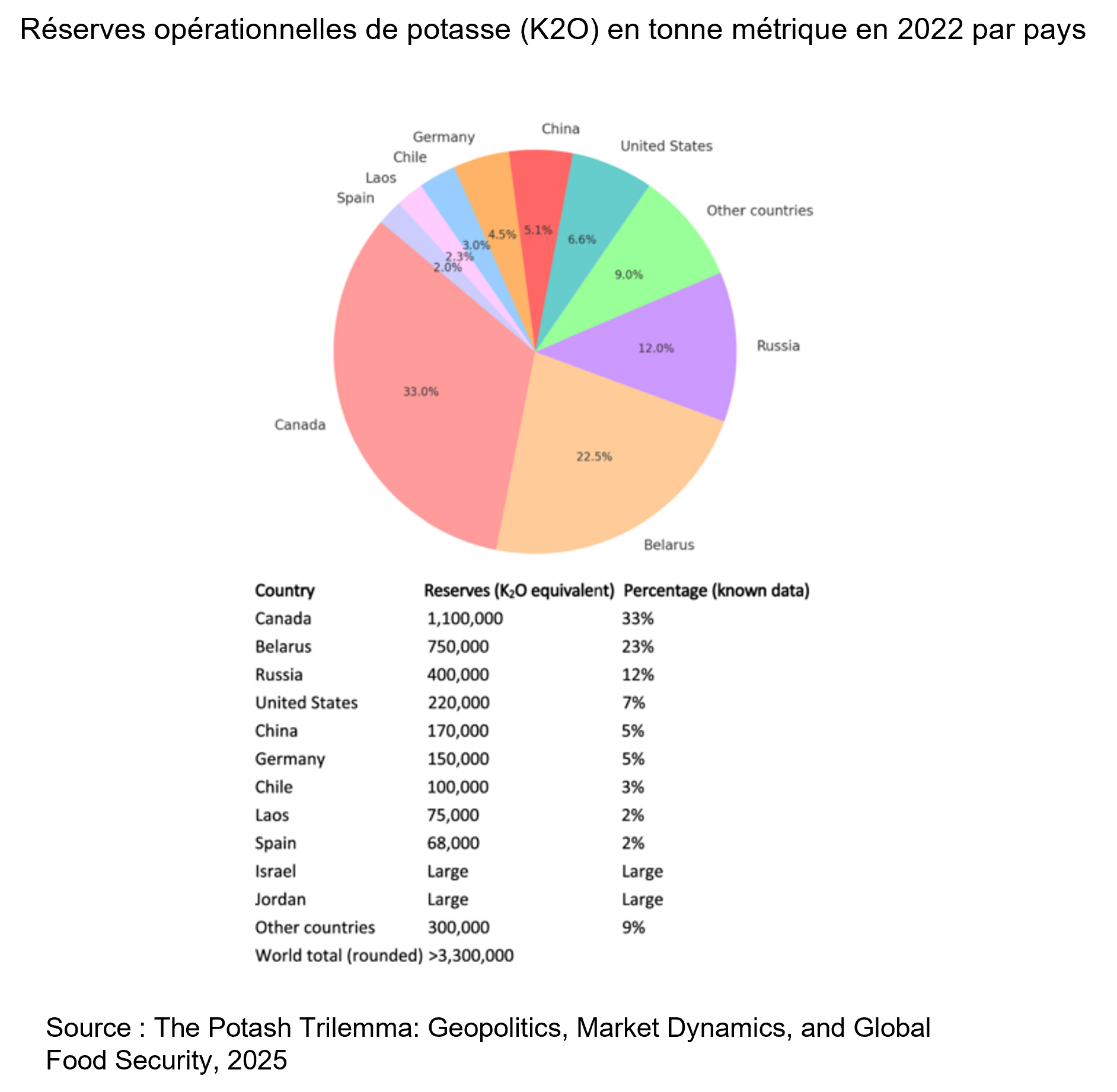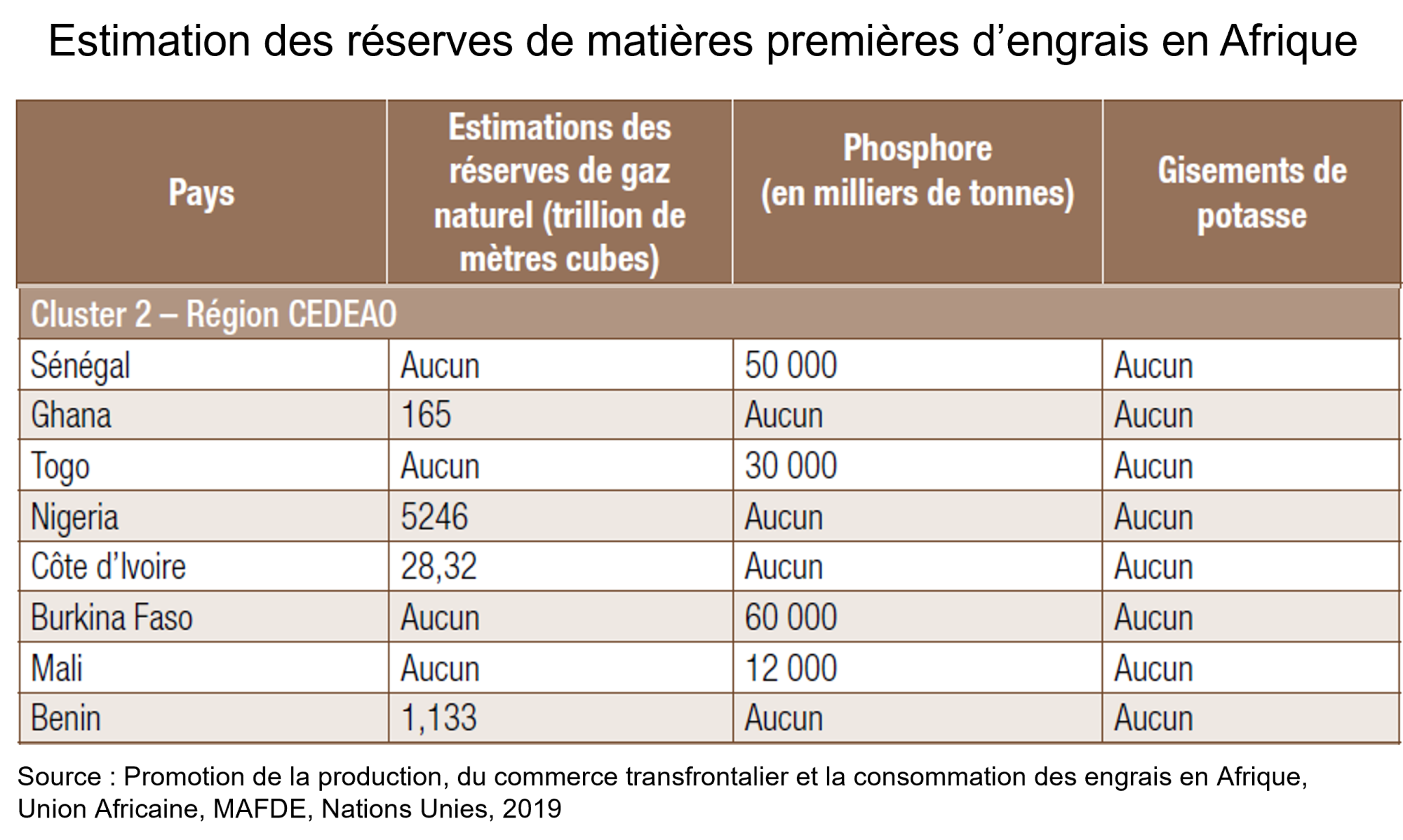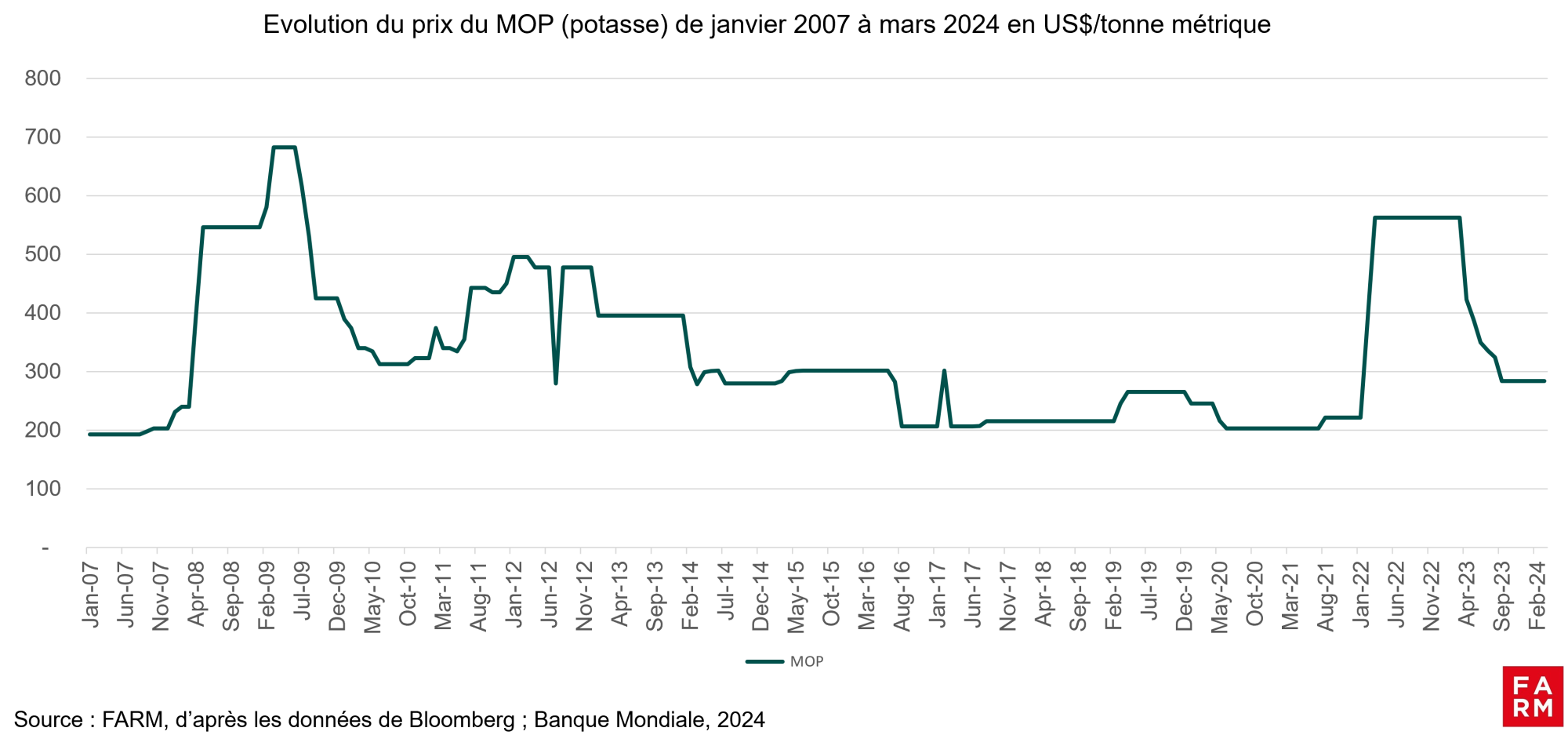Dependence on potash imports: How can West Africa strengthen its agricultural resilience?
In West Africa, food security depends on an invisible but key input: potash. Yet the region remains at the mercy of global markets and geopolitics. Potassium (also called potash), symbolized by the "K" in the NPK formulation of mineral fertilizers, is essential for agricultural production. Potassium fertilizer contributes to plant growth and strengthens resistance to disease. It increases the sugar content of fruits and also reduces water stress., making it an essential element for optimizing agricultural yields and ensuring food security, both in West Africa and globally. FARM provides an initial analysis of the issues related to potash flows between West Africa and the rest of the world.

Methodology
This analysis explores the evolution of average annual trade and consumption of potassium, expressed as pure mineral elements (K) for agricultural use between West Africa and seven major geographical areas over three decades (1990-2022). The data, taken from FAOSTAT (2024), are represented by maps illustrating three distinct periods: 1990-2000, 2001-2011 and 2012-2022. Imports are visualized by histograms, exports by arrows proportional to volumes and consumption by flat colors reflecting intensity.
Unequal distribution of potash reserves worldwide weakens West Africa
The uneven distribution of potash reserves around the world poses major sovereignty challenges for countries that do not have them. The world's largest reserves are held by Canada (33 %), Belarus (23 %), and Russia (12 %). which collectively control nearly 70 % of the total operational reserves, leaving many countries heavily dependent on imports.

In 2022, 82 % of global potash consumption is importedIn a context of high volatility, developing countries, particularly West Africa, due to their economic and political fragility, are experiencing greater difficulties than other importing countries in bearing the price increases of potash, making them very vulnerable to supply shocks and global crises. Furthermore, as we have shown in a previous publication (https://fondation-farm.org/engrais-et-fertilite-des-sols-en-afrique-de-louest-tout-comprendre/), the balance sheet of potash availability in West African soils is negative, and this degradation is increasing over the years. According to the Alliance for the Green Revolution in Africa (AGRA), which examined 37 African countries over thirty years, on average, more than 450 kg of potassium per hectare have been lost in cultivated land. This degradation results mainly from a insufficient use of mineral and organic fertilizers, but also of a climate deterioration observed since the 1970s. The depletion of potash reserves leads to a drop in yields and accelerates soil degradation.
On the other hand, the lack of exploitable deposits in the region forces countries to massively import potassium fertilizers, leading to economic and logistical repercussions.

This situation creates a vicious circle: low agricultural productivity increases food insecurity, while the high cost of inputs (especially in times of crisis) limits their accessibility for smallholders. The near impossibility of return significant quantities of potash to the soil without resorting to mineral fertilizers worsens the region's situation of dependence and exerts increasing pressure on West African food security.
+130 % consumption in 30 years but total dependence on imports
Potash consumption has, however, increased considerably in West Africa, from an annual average of nearly 110,000 tonnes in 1990-2000 to more than 250,000 tonnes in 2012-2022. Given that potash is used overwhelmingly for fertilizer production, this increase of 130 % reflects an intensification of agricultural practices and a growing awareness of the nature potash limiting for increasing yields (like phosphorus). There are significant differences between countries in the West African region in terms of potash consumption and trade. Nigeria, Ivory Coast and Ghana became the main consumers in the early 2020s. However, West Africa remains a minor player in global potassium fertilizer consumption. In 2022, the sub-region accounted for 0.75 % of global consumption. For comparison, China, Brazil and the United States together consume 70 % of the world supply.
Diversifying supplies in the face of the growing weight of the Black Sea
Although West Africa consumes little potash, it actually represents a tiny fraction of global imports, with a share of 0.84 % in 2022 according to the FAO. Potash supply sources have evolved over the past 30 years, as shown in the infographic. We observe a growing share of Black Sea origin (Russia and Belarus) as well as a decline in imports from Europe over the last period. The Black Sea area, on the eve of the Russo-Ukrainian conflict, represented 43 % of potash imports into West Africa (Europe comes in second with 20 % of the area's total imports). This situation is linked to the decrease in potassium fertilizer production in Europe and to the strengthening of production in the Black Sea region.
Unlike nitrogen, reliance on a limited number of potash suppliers exposes the region to a greater risk of supply disruptions in the event of shocks or shortages. This is because the global potash market is dominated by a limited number of exporters. Russia and Belarus, for example, accounted for 35.1% of global potash production in 2020.. Disruptions in the Black Sea region and sanctions imposed on Russia and Belarus have led to a rise in fertilizer prices, exacerbating food security problems and budgetary tensions in many importing countries, including West African countries.

Since the COVID-19 pandemic and the Russian aggression in Ukraine, between May 2020 and May 2022, the price of potassium chloride (MOP), the main form of potash traded on the markets, has increased 2.7-fold. However, beyond the recent increase, it appears that the price of MOP is structurally volatile and strongly influenced by various global crises, such as the 2008 crisis which had already driven prices to historically high levels. This market sensitivity to international events accentuates the difficulty for West African farmers to access fertilizers, even though their access already remains limited in normal times. In addition, African countries are facing inefficient transport infrastructure and high distribution costs which further restrict access to potassium fertilizers for small producers.
This situation confirms the importance of diversifying potash supply sources to strengthen the region's resilience. Canada, for example, became the world's leading potash producer in 2022 with 32 % of global production representing, alone, more than 23,% of West African imports this year. In response to the reduction in supply due to the war in Ukraine, Canada has announced plans to increase its potash productionHowever, the main markets for Canadian potash are the United States, Brazil and China, which together account for 73 billion tonnes of Canadian exports, making competition difficult for West African countries.
Conclusion
Ultimately, West Africa's situation with regard to potash illustrates the major challenges of increased dependence on imports for a strategic and limiting agricultural input. This global context, marked by the concentration of reserves, price volatility, and geopolitical tensions, makes the region particularly vulnerable to external shocks, which weakens the food security and economic stability of West African farmers.
If potash reserves are non-existent in West Africa, other African countries have them, (Congo, Ethiopia, Eritrea, Egypt, Morocco) opening the way to new markets and opportunities that could lower prices globally. However, even if available resources increase, prices remain difficult to predict.
In this context, how can West Africa sustainably strengthen its resilience to fluctuations in the global potash market? Should we prioritize diversification of trading partners, given that major suppliers remain limited? Investing in local alternatives appears complex, given the lack of exploitable reserves in the region. It therefore appears essential to consider agricultural development trajectories in order to limit dependence on imported fertilizers. Avenues such as biostimulation and biofertilization (allowing optimization of the use of potash fertilizers) or the recycling of mineral elements from urban environments could thus be explored.
These different axes call for collective strategic reflection, not only in West Africa but also on a global scale, in order to guarantee food security in dependent regions, in an increasingly uncertain international environment.
If you are interested in this topic, find FARM's analysis on nitrogen And phosphate.
